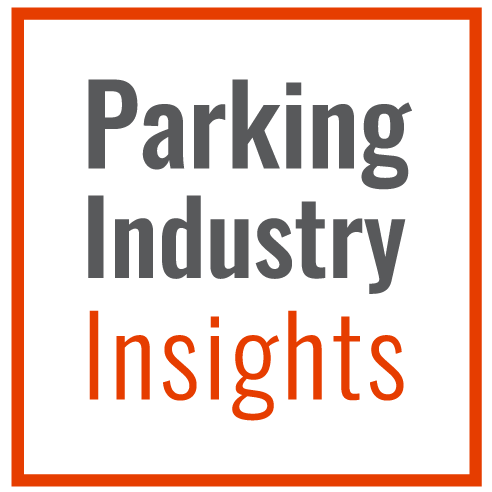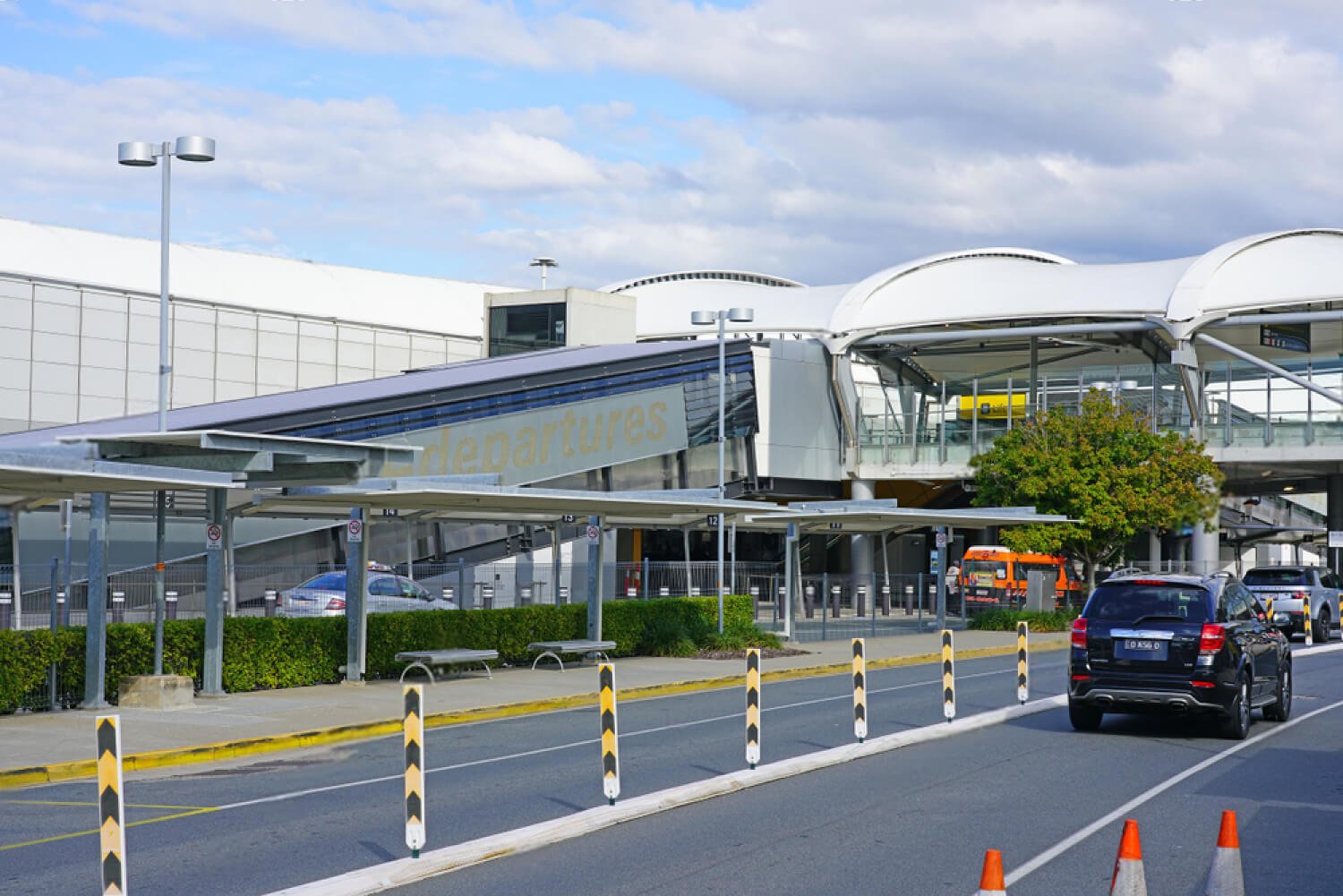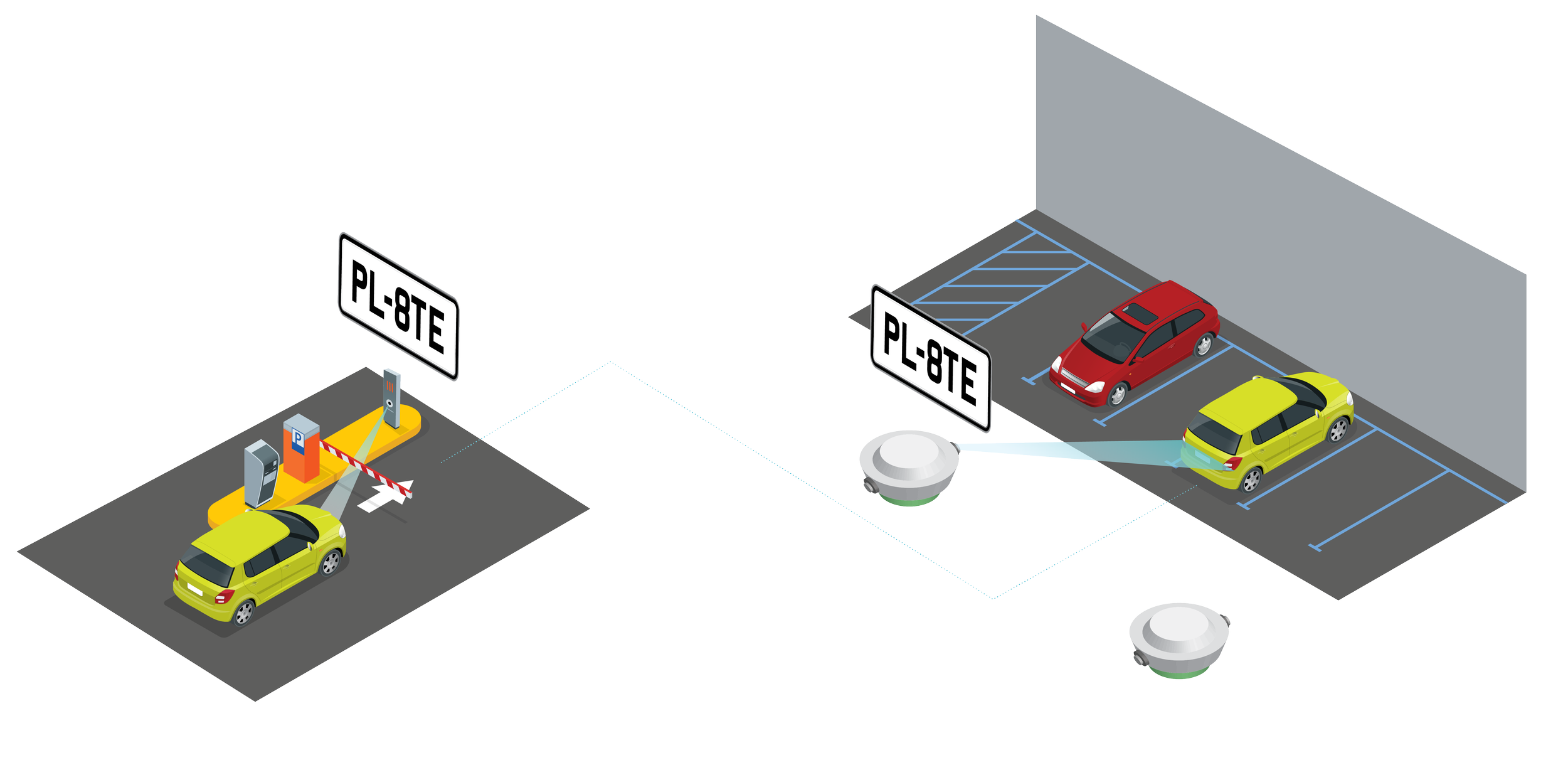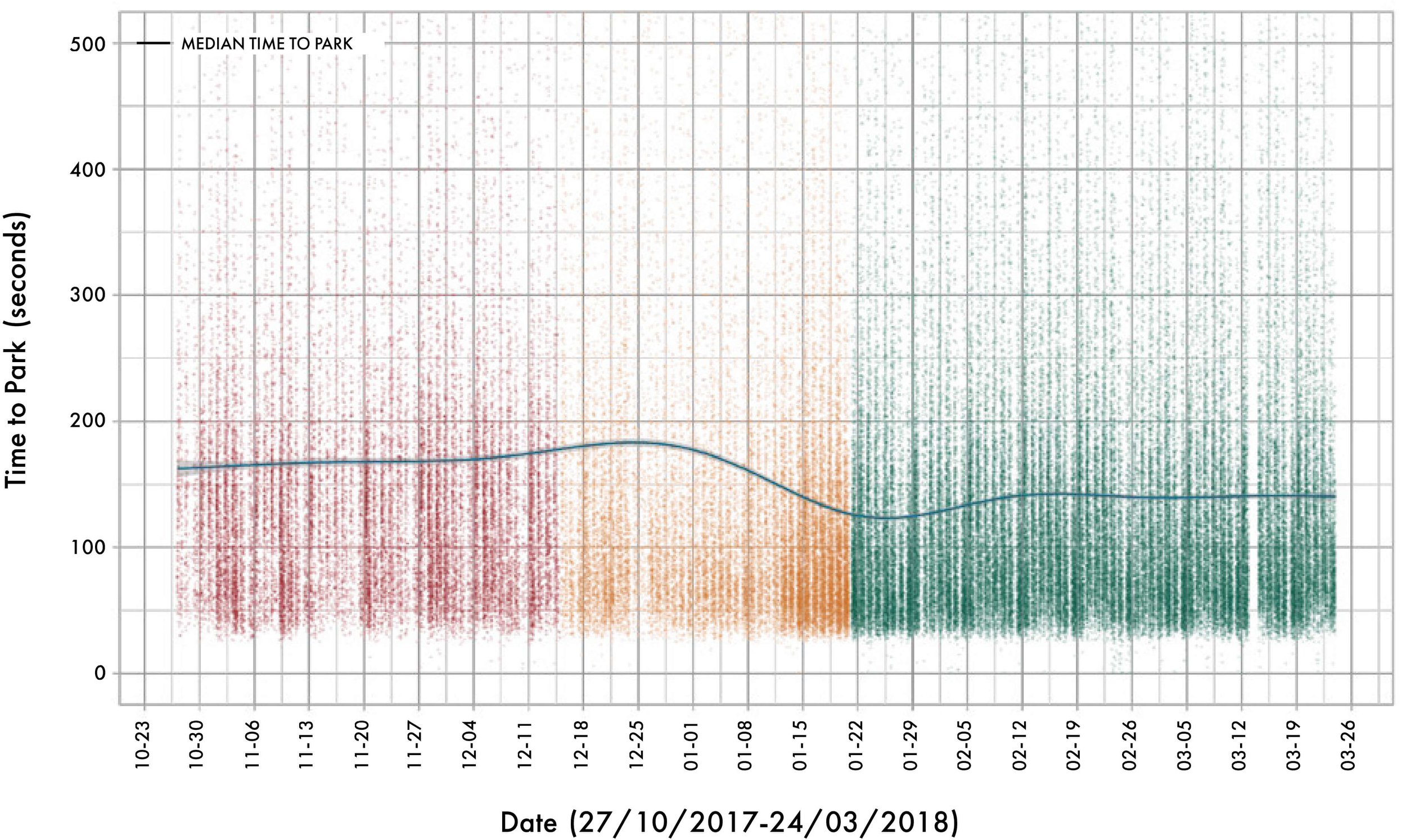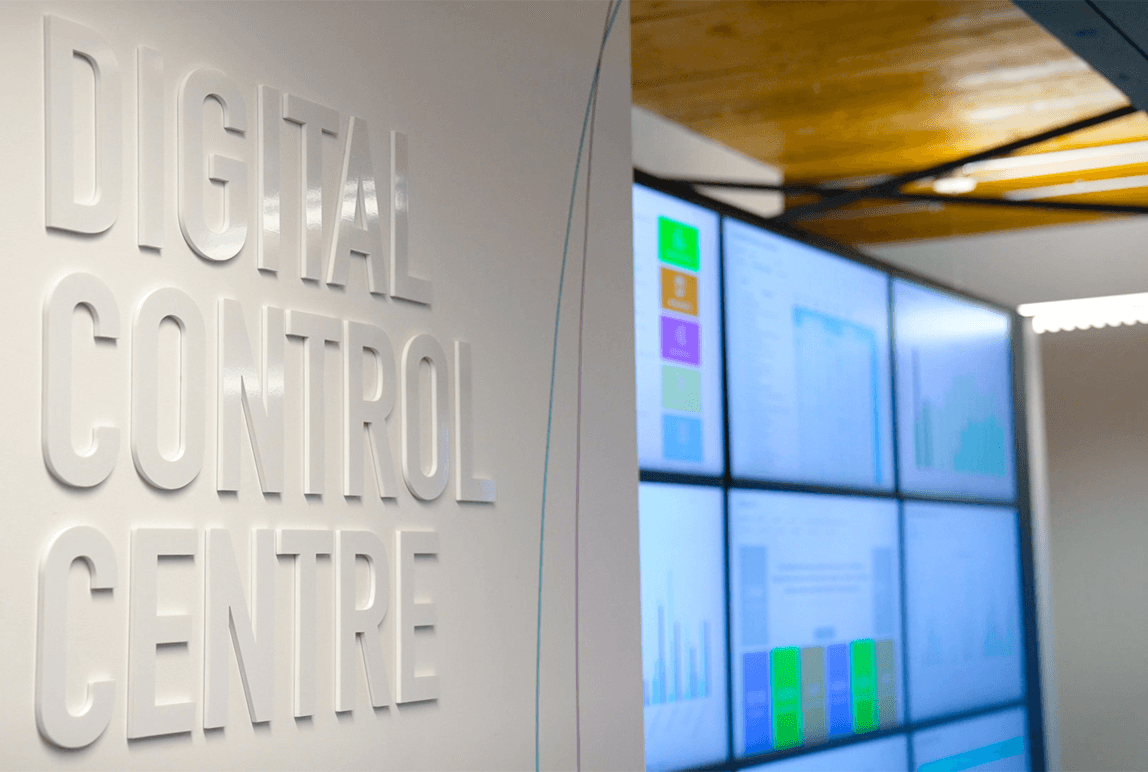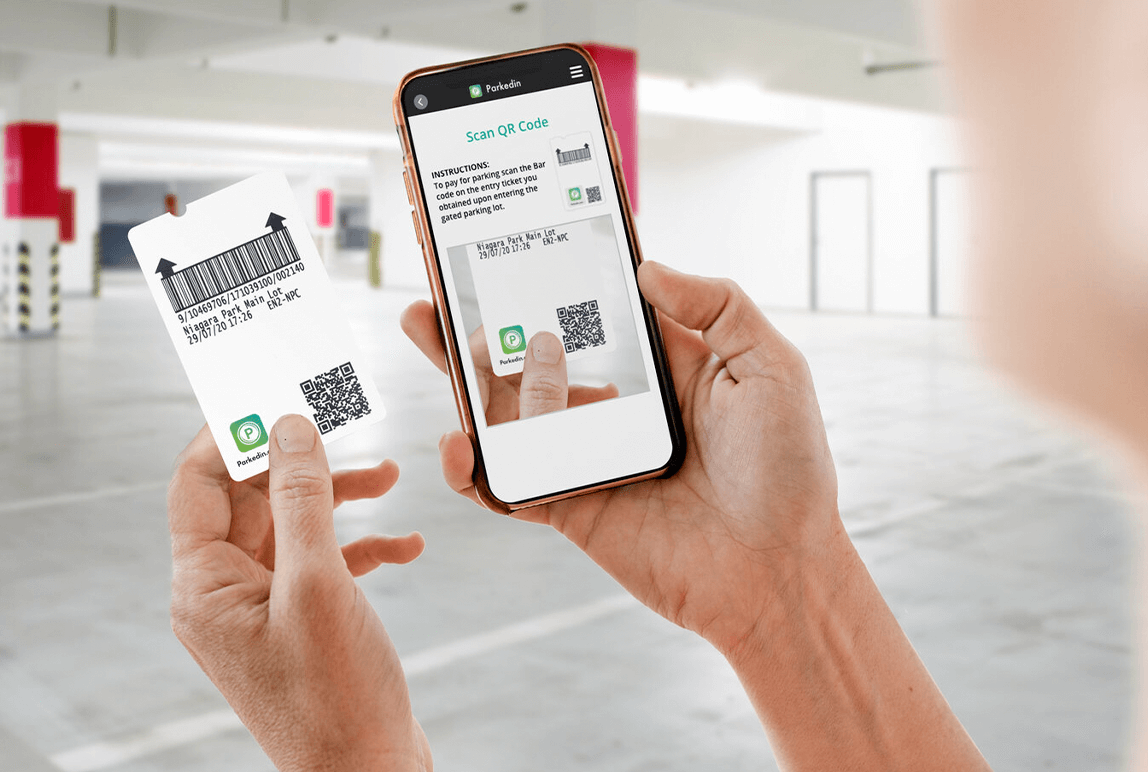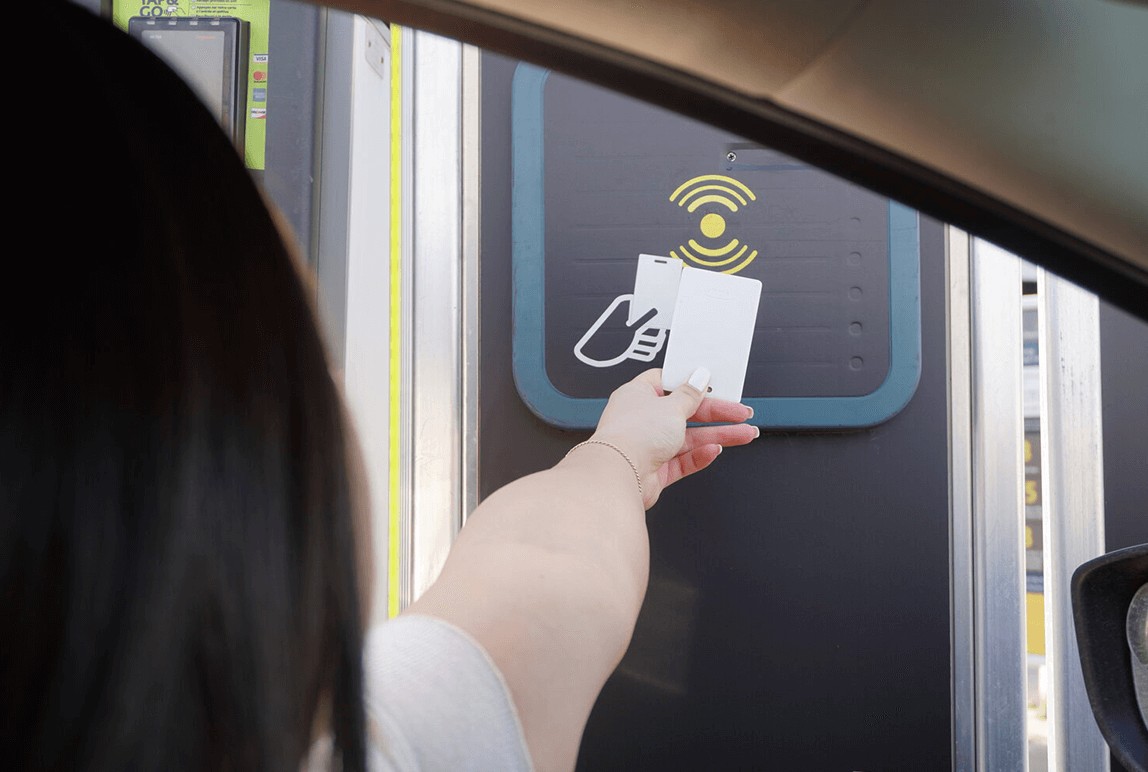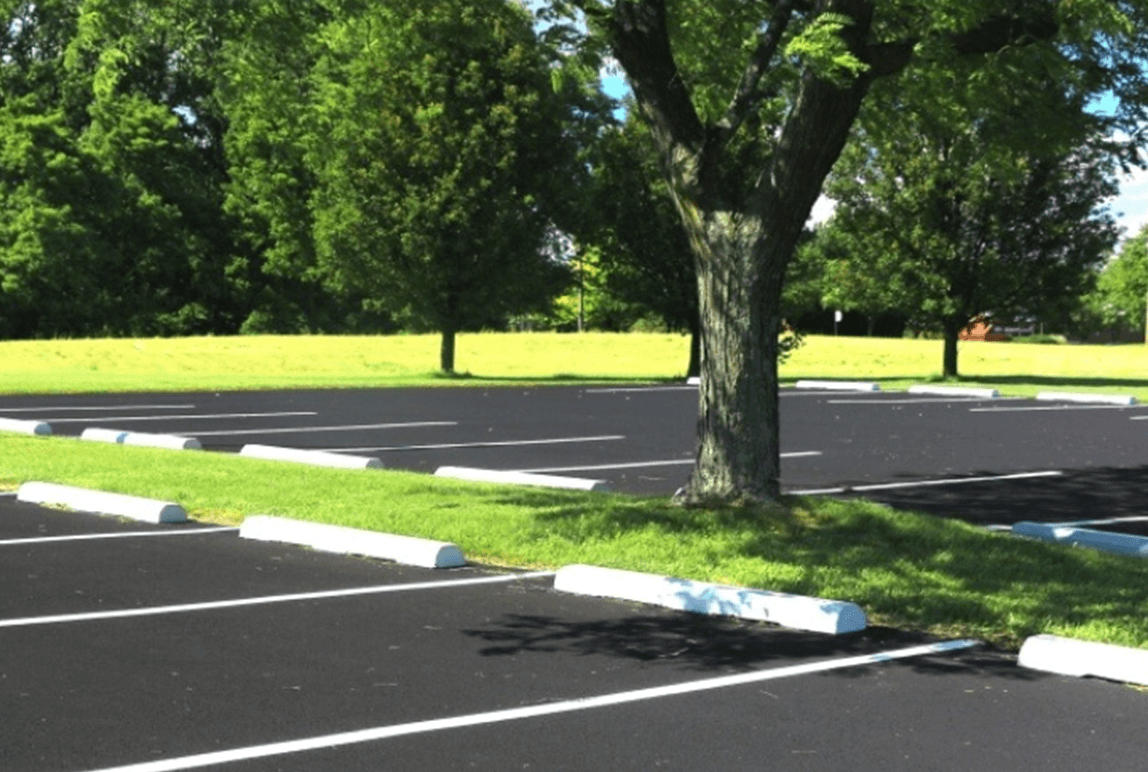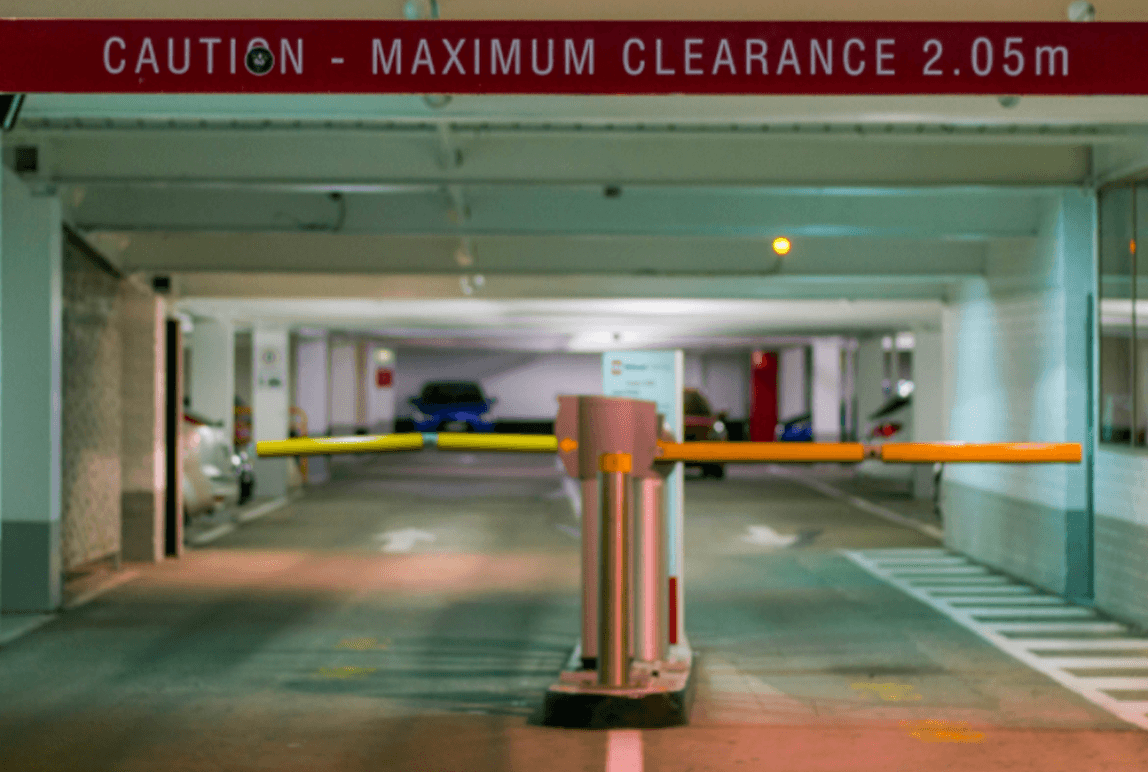Quantifying The Impact of Park Assist’s Parking Guidance Solution on Customer Experience
Posted: Aug, 08, 2022 12:49AM ET • 10 min read
Poorvi Kaushik
Jeremy Lewis
Park Assist®
Introduction
In addition to elevating the overall customer experience for visitors, one of the primary benefits of installing a parking guidance system (PGS) is an overall reduction in the time taken to park. Up to now, little has been done in the industry to objectively quantify the effects that a PGS has on driver decision-making and the parking experience itself. General assumptions have been derived from limited manual observation-based studies, customer feedback and onsite observations.
In collaboration with the Brisbane Airport Corporation, Park Assist recently completed a groundbreaking benchmarking study on the quantitative impacts of its M4 PGS on the time between vehicles entering the car park and parking in a vacant bay (referred to in this whitepaper as “Time to Park”).
To our knowledge, based on the methodology used and sample size, it is the first of its kind in the industry. Conducted over a period of five months, our results emerge from the acquisition of nearly 1.2 million data points, translating to a total of 127,284 unique customer journeys.
This white paper explores the findings of the study, which verify the ability of a PGS to make the parking experience far more streamlined, consistent and user-friendly. It also takes a look at the design and execution of the supporting science-based methodology used to ensure accuracy and integrity in the results.
Our M4 camera-based Parking Guidance Solution
This study leveraged and correlated data from two independent systems:
The Park Assist camera-based PGS at Australia’s Brisbane Airport uses a network of M4 smart-sensors to monitor each individual bay in the parking car park for entry and exit events.
A third-party Parking & Revenue Control System (PARCS) uses ANPR cameras placed at the entry and exit lanes of each car park to monitor vehicle entry and exit to each car park.
Both systems use automated License Plate Recognition (LPR) to uniquely identify a vehicle.
The data streams from both systems were combined to form a rich dataset, including:
Millisecond-level timestamps and license plate images for specific vehicles from the entry/exit cameras
Smart-sensor millisecond tracking of dwell time for specific vehicles in specific bays
Occupancy levels for all lots across the parking car park and in specific levels/areas
Location information, including the level a vehicle is parked on and the type of bay it occupies (i.e. casual vs. disabled)
A seamless wayfinding experience.
The overarching goal of the camera-based Park Assist M4 PGS is to remove all stress and uncertainty from the parking process. As such, the M4 smart-sensors and multifaceted wayfinding signage collaborate to guide each parker from car park entry to a vacant space – while improving overall traffic flow throughout a facility. Wayfinding elements at Brisbane Airport include:
Arrival signage. Multi-facility signs announce the number of available spaces at each car park or lot. This continually updated information enables parkers to decide on the best facility to park in at any given moment.
Level signage. Once a parker has decided to park in a specific car park, dedicated signs display the number of available spaces on each level.
Aisle signage. Once a parker has committed to searching for a space on a particular level, pointer signage enables a parker to make on-the-spot decisions (left, right or straight) based on the number of available spaces.
Color-coded pilot lights on the smart-sensors. This is where the M4s – which have been providing up-to-the-second occupancy data to the core system all along – kick in to finish the wayfinding process. In addition to green (vacant) and red (occupied), these bright, clearly viewable LED indicators can be programmed to display thousands of colors to denote special-purpose spaces – i.e. blue for disabled, purple for premium, and so forth.
Study design, focus and methodology
For Park Assist, the focus of the study was to systematically measure the impact of the M4 PGS on a fundamental KPI for operational efficiency and customer experience, that being the average time it takes vehicles entering the car park to park in a vacant bay (Time to Park).
Structured as an A/B experiment, in which Time to Park was measured in the presence and absence of PGS elements, the study encompassed two parking facilities at Brisbane Airport with a combined total of 7,903 individually M4-monitored bays:
P1 – MLCP
Brisbane’s main car park for medium-term and long-term parking with 8 levels and 4191 bays.
P2 – LTCP
Brisbane’s adjacent car park for long-term parking with 6 levels and 3712 bays.
While the main focus of the study was the P1 car park, which accounts for 70% to 80% of overall parking activity at Brisbane, the study also analyzed parking behaviour in the P2 car park – incorporating trans-facility events via a roadway bridge connecting both car parks.
Occupancy of the car park could significantly impact the time taken to find a parking spot. This had the potential to skew results, and to conflate the effects of the impact of our PGS with the activity onsite. Key to our approach was to remove the effect of occupancy changes on the measured variables. By measuring car park usage over the duration of the experiment we were able to normalise the data for occupancy. Having removed the effect of this important factor from the changes observed in Time to Park, we are confident that the results of our A/B experiment strongly reflect the effect of our PGS.
Multiphase experiment design
The Brisbane Airport benchmarking study took the form of an A/B experiment:
The initial 6-week phase (Phase A) entailed the collection of existing parker behaviour data. During this phase, the Park Assist M4 system was being used in sensing mode only. All parking guidance elements of the system were disabled (signage and pilot lights), to ensure customers were not influenced by the PGS.
For the 6-week “holiday” phase (Phase H), the parking guidance elements (signage and pilot lights) were turned on. This phase enabled the study to compensate for any outlier or anomalous behaviours that could affect its integrity, such as the busy end-of-year holiday travel period, behaviours of drivers who are becoming acclimated to the new PGS, and the optimization of the camera-based sensors to the environment.
The 8-week post go-live measurement phase (Phase B) continued with the use of the fully functional system to collect parker behavioural data during the typical course of day-to-day operations at Brisbane Airport.
Calculation of Time to Park
In the Brisbane study, Time to Park was obtained by matching events from the two independently acquired datasets:
the ANPR vehicular entry and exit dataset, and the entry/exit event dataset from the M4 smart-sensors for the individually monitored bays. Each record in both datasets includes the license plate number of the vehicle image that was captured, along with its associated millisecond-level timestamp.
Time to Park is calculated through exact matching of the license plate numbers in each set. A diagram of this process is shown in the following chart.
Time to Park
Key findings of the study
Conducted over a 5-month period, the findings of the Brisbane Airport benchmarking study resulted from the acquisition of nearly 1.2 million data points, representing a total of 127,284 unique customer journeys. The scientific analysis of this significantly sized sample of parker behaviour activity, when comparing phases A & B, yielded the following results:
36% reduction in Time to Park in P1 car park.
Comparison of pre and post go-live behaviour showed a 36% decrease in average Time to Park and a 23% decrease in the median Time to Park after the Park Assist PGS system was enabled. The drop in average Time to Park occurs gradually while, as seen in the following chart, median Time to Park drops off almost immediately. This quick median dropoff indicates the majority of drivers are sensitive to the guidance provided by the PGS.
33% reduction in Time to Park across both car parks.
Comparison of pre and post go-live behaviour showed a 33% decrease in average Time to Park and a 20% decrease in the median Time to Park after the Park Assist PGS system was enabled in both car parks.
50% reduction in Time to Park for primary entry levels in P1 servicing short-term parkers.
Upon further analysis, we found short-term parkers enjoy the greatest Time to Park improvements. For levels two and four of the Brisbane P1 car park – where there are a wealth of short-term bays and direct entry points from the roadway – the average Time to Park reduction was 50%. The combination of short-term parking (and therefore higher vehicle turnover) combined with the direct entry points from the roadway culminated in higher vehicle movements on these levels. We infer that this resulted in higher levels of congestion which the PGS helped reduce, translating to an even more substantial reduction in Time to Park on these levels.
Improved and more consistent customer experience.
Parking behaviour shows highly reduced variability with a PGS. The key parker benefit is improved consistency and predictability, key elements of an enhanced customer experience. These factors also enable owners/operators to better forecast parking behaviour and car park usage patterns.
Here are two significant observations, as shown in the graph above:
Average Time to Park by hour of day was lower across almost all hours of the day
The maximum differential, average Time to Park savings of over 100 seconds of time, occurred during the morning hours between 9:00 am and 12:00 noon
Drivers parking in disabled bays save up to five minutes finding a parking space.
Analysis for the P1 car park also found that, for drivers parking in disabled bays, a PGS can reduce average Time to Park by nearly 63%. This translates to a time savings of nearly 5 minutes per event.
This use case illustrates the opportunity to better support unique customer segments, by specifically tailoring dynamic parking guidance and navigation to their needs.
An additional half-minute reduction of Time to Park on weekends.
Weekday parkers, from Monday through Friday, benefitted from an average 32% decrease in Time to Park. However, parkers arriving on Saturday and Sunday experienced an average 49% decrease in Time to Park. This translates to a time savings of nearly half a minute or more, when compared to weekday parkers.
Our educated guess as to why this happens, though unproven, is that drivers arriving at Brisbane Airport on weekends tend to be leisure travellers who are less familiar with the environment and therefore tend to place a higher reliance on the PGS.
Summary
This groundbreaking PGS benchmarking study by Park Assist, undertaken in collaboration with the Brisbane Airport Corporation, has quantified a number of key benefits of a PGS. The most significant benefit is a substantial reduction in Time to Park, observed consistently across different times, locations and types of visitors/parkers. We venture that these benefits are due to the ability of the Park Assist M4 PGS to enhance driver decision-making by providing informed real-time recommendations on where to park.
The Park Assist Science Team is continuing work to augment and further the findings of this study through additional exploration and analysis. The insights gained through this data-driven exploration will continue to inform the future of our product design – enabling us to bring more cutting-edge innovations and proven solutions to the marketplace
Our overarching mission as always, is to make the parking experience as streamlined, consistent and user-friendly as possible. This in turn helps owners and operators to maximize the efficiency of car park operations, in ways that heighten parker satisfaction, build customer loyalty, and boost overall revenue.
Share Article:
ABOUT THE AUTHOR
Park Assist is the parking industry leading camera focused innovator with the most camera based parking guidance installations in the world. Our technology helps customers effortlessly find parking spaces in real-time as well as find their cars when they return. Simultaneously, we provide parking operators with tools to improve customer satisfaction, create new revenue opportunities, realize greater operational control, capture parker analytics and expand CCTV capabilities.
Questions?
Fill out the form below and we will do our best to connect you with a suitable contact.
